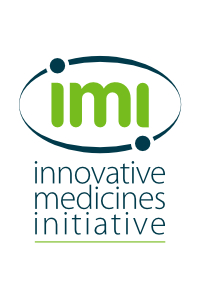- Education
-
Research
Current research
Talent
-
Collaboration
Businesses
Government agencies and institutions
Alumni
-
About AU
Organisation
Job at AU
Knowledge sharing, joint publications and network, network and more network. Those are the benefits for researchers who get involved in the IMI project under the auspices of the pharmaceutical industry and the EU. Despite this, very few Health researchers are involved in IMI projects, which is regrettable, according to the researchers who have experience with IMI.
2017.04.06 |

The number of researchers at Health who are involved in projects funded by the Innovative Medicines Initiative (IMI) can be counted on one hand, even though a lot of funding and strong networks are connected to the ambitious EU partnerships, which focus on accelerating the development of better and safer pharmaceutical products.

"It’s a question of learning how to navigate the system. Use the internet proactively, and remember that it’s up to you to seize the day,” says Poul Henning Jensen, professor at the Department of Biomedicine.
The number of researchers at Health who are involved in projects funded by the Innovative Medicines Initiative (IMI) can be counted on one hand, even though a lot of funding and strong networks are connected to the ambitious EU partnerships, which focus on accelerating the development of better and safer pharmaceutical products.
In response to this, the Faculty of Health and the Research Support Office has taken the initiative to hold an information meeting about the IMI programmes on 8 May. The programmes are Europe's largest public-private initiative for the financing of research collaboration between European universities and pharmaceutical companies in Europe and the USA. The event will take place in cooperation with the Danish Agency for Science and Higher Education.
These projects are defined by the industry, and researchers can apply to join them, for example by joining international consortiums. And if you ask the Health researchers involved in IMI projects, then there is no need to hesitate before getting involved.
"I have found a considerable degree of freedom in relation to the theme that I applied to work on, and I view my participation as an important exercise in ensuring my visibility in my international network. Because if you don’t make yourself visible, then you will not find anyone to collaborate with, and there’s a lot of money out there," says Poul Henning Jensen. He is a professor at the neurological research unit DANDRITE under the Department of Biomedicine and is part of the IMI project IMPRiND, which aims to develop methods that can be used in medicines that can inhibit Parkinson's disease.
"Even though in principle, I’m a small cog in a big project that is run out of Oxford, the collaboration has provided valuable connections. The consortiums are made up of people with complementary skills, and that provides a new perspective on your own area of specialisation, which is something you can also make use of in other contexts," says Poul Henning Jensen, who is not worried about the close ties to industry.
"I do not know any researchers who would reject a collaboration with the pharmaceutical industry, which is understandable when you think about the funding situation today. We have common interests to a large degree, and I have experienced a high degree of freedom in the project that I have been involved in – but of course it needs to fit into the big picture," says Poul Henning Jensen.
Professor Nanna Brix Finnerup from the Danish Pain Research Centre at the Department of Clinical Medicine has also had a positive experience. Together with Professor Troels Staehelin Jensen, she is involved in the multi-year IMI project EUROPAIN, which is aimed at understanding pain mechanisms in order to improve the treatment of patients suffering from chronic pain.
"For us, the collaboration with highly skilled researchers from other countries, including researchers from the industry, has been very rewarding," says Nanna Brix Finnerup. She explains that the industry's researchers are particularly conscious of the necessity of stringent requirements for experimental design, randomisation and blinding in the initial animal experiments. All of which is driven by a desire to ensure the most valid results and to move more quickly from the initial preclinical animal studies and on to clinical trials on patients.
"This meant that we quickly reached consensus on better methods and meta-analyses in preclinical trials. This close collaboration between the preclinical and clinical researchers and the industry also gave us a unique opportunity to use the research to benefit the patients faster," says Nanna Brix Finnerup.
Specifically, the project has resulted in better criteria for which patients stand to benefit from the different types of pain treatment. In addition, the European Medicines Agency has incorporated the consortium’s results in their latest guidelines for the development of new pain treatments.
Professor Lars Pedersen from the Department of Clinical Epidemiology at the Department of Clinical Medicine also considers himself fortunate to be involved in no less than three IMI research programmes, together with Professor Henrik Toft Sørensen: ADVANCE, which leverages existing health data in a number of EU countries to investigate the effect and safety of vaccines; EMIF, which aims to strengthen the use of health data for research purposes; and ROADMAP, which aims to find an effective treatment for Alzheimer's disease across national borders.
On the basis of the three projects, Lars Pedersen does not hesitate to recommend IMI projects to fellow researchers.
"The recommendation is also really necessary," he adds with a smile, "because many of the world's leading researchers have never heard of IMI. They are full of amazement when I make presentations from the projects at conferences and congresses, and I have also wondered why IMI is so little known. Because there is no doubt that the programme is a sure path to a huge, invaluable network, where you share knowledge and publish together."
Lars Pedersen generally agrees with the view of the industry as a relevant and unproblematic partner from which academic researchers can learn. Nonetheless, he is careful not to paint an idealised picture:
"In the case of ROADMAP and ADVANCE, the industry and the academic world have enjoyed a good collaboration, but looking at the overall picture, it is also true that we have had some friction in the EMIF project arising from different expectations in regard to data access and data ownership. EMIF is basically about creating infrastructure in relation to big data in the healthcare sector, but at the same time, we can in no way compromise on data security and the handling of sensitive personal information,” says Lars Pedersen.
Another negative aspect of EMIF Lars Pedersen and Nanna Brix Finnerup have noted is that the EU lives up to the rumours about bureaucratic red tape in relation to accounting. However, this does not alter their fundamental enthusiasm about the academic and financial opportunities EMIF offers. According to Lars Pedersen, the Department of Clinical Epidemiology has funded the salaries of large number of researchers through the three IMI projects. For the Parkinson's disease project, Poul Henning Jensen has gotten funding for a postdoc for two years as well as operational funding, while Nanna Brix Finnerup and Troels Staehelin Jensen can point to the concrete benefit of the EUROPAIN project in the form of financing of four PhD students and two postdocs, as well as technical and administrative funding during the project's five years.
In addition to funding and personnel, Nanna Brix Finnerup, Poul Henning Jensen and Lars Pedersen agree about the secondary effects: getting contracts for projects through the network. And being invited to join other projects as a matter of course. Poul Henning Jensen’s final comment is that it is really a question of getting started:
"It’s a question of learning how to navigate the system. Use the internet proactively, and remember that it’s up to you to seize the day!”
The program for the information meeting can be accessed at Forskningsstøtteenhedens webpage: http://medarbejdere.au.dk/fileadmin/www.medarbejdere.au.dk/forskning_talent/Forskningsstoetteenheden/2017_05_08_imi_invitation_final.pdf
- where you also can read more about IMI.
The direct link to sign up: https://auws.au.dk/forms/frm1Arrangement.aspx?value=636269079881483289&id=32652
Senior adviser Karen Matthisson
AU Research Support and External Relations - Research Support Office
Mail: kmat@au.dk
Tel: +45 51 33 53 58